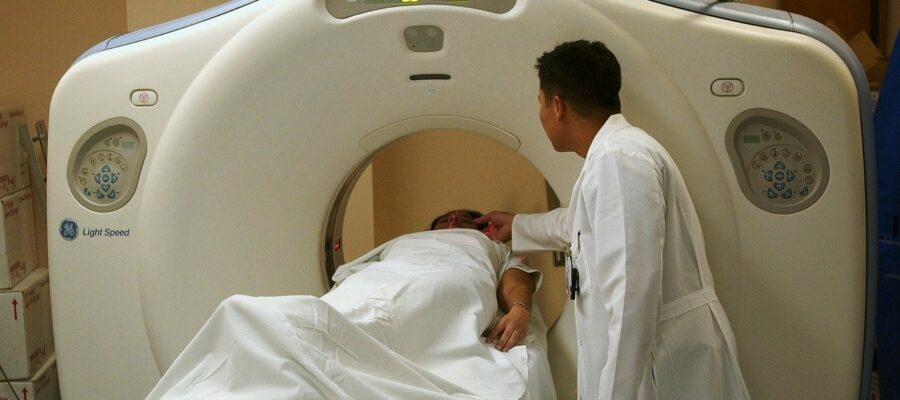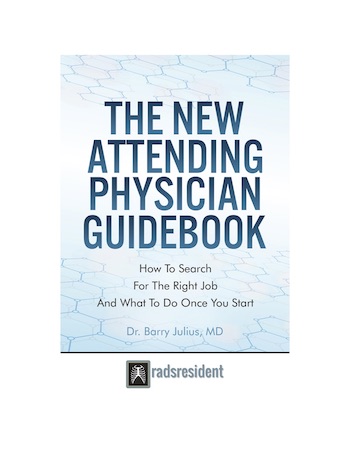CT imaging is often by far the busiest radiology rotation at many hospitals. Emergency departments order more studies every day to reduce disposition times and cover themselves. Physicians of all sorts bombard you with multiple phone calls.
With all these pressures for increasing attending output and less teaching every year, how can you succeed on your hospital CT rotation? Well, I will tell you the reading materials that will help you get through this rotation. Then, we will go through a year-by-year analysis of the processes you should take to succeed in this rotation. Finally, we will summarize the most critical components of having a successful hospital CT rotation.
Reading Materials On CT Rotation
There are so many areas to cover with so little time for CT rotations. Therefore, efficiency is the general theme for CT learning. You need materials that are concise and easy to understand. I am going to provide you with some of those resources.
Let’s divide the hospital CT rotation into four different areas to cover what you need to know: CT anatomy, CT chest, abdomen, and pelvis (body imaging), CT head (neuroradiology), and CT extremities (MSK). Of course, you will need to know all of them. But, the details you need to know will not be the same as the in-depth dive into MSK, neuroradiology, and chest rotations you might have. Therefore, I would start by limiting myself to materials that cover those topics that are most efficient and that are essential: cross-sectional anatomy basics, the basics of CT scans, disease entities that will kill or severely injure patients, and finally, common disease entities. Reading summary books and case review series will most likely give you the most bang for your buck in reading.
Anatomy Reading
I recommend you check out one of the cross-sectional atlases to cover the basics. I often use Cross-sectional Anatomy CT & MRI to review anatomical structures if I have a question. If you are a more junior resident, I would recommend going through this book cover to cover and looking through all the CT cross-sectional correlative images. This atlas will get you up to speed so you can make the findings for your rotation.
Body CT Reading
Next, I recommend going through a short book called Fundamentals of Body CT by Webb for your chest, abdomen, and pelvis basics of interpretation. Universally, all my residents recommend this easy-to-read summary of the key elements you need to know to understand how to read body CT scans. I used the same book (albeit an older version!) as a resident eons ago. The Emergency Imaging Case Review Series can also give you cases with acute diseases that you must know on rotation and call.
Neuroradiology CT Reading
A lot of neuroradiology comes down to knowing your anatomy. So, check out the programmed text called Sidman’s Neuroanatomy. Residents consistently hail this book as a great way to review the critical anatomy you will need to interpret brain CT scans. Additionally, many of my residents recommended Radprimer to learn the basics of neuroimaging. Finally, you may want to have Osborn’s Brain around to read about more specific disease entities. I recommend reading this book cover to cover, not as much while on CT (because of lack of time) but rather when you are on neuroradiology rotation.
Regarding head and neck cases, consider going through the Head and Neck Imaging: Case Review Series to review the morbid and familiar disease entities. It is hard to go through an entire textbook on this rotation because of the wide variety of diseases and the complexity of anatomy. However, this book will allow you to learn what you need to know about this topic. One of my residents also recommended headneckbrainspine.com as a great way to review anatomy and disease entities that you will find on this rotation. Check that website out. You will like it.
MSK CT Reading
Finally, you will need to know the basics of MSK to interpret CTs of the extremities. Once again, I would refer to Fundamentals Of Skeletal Radiology (as I discussed in the How to Be Successful in MSK blog) to cover the basics of what you will need to know at night. Many residents also touted the MSK section of Core Radiology as a great way to review this area.
Spine CT has also become much more common since I was a resident. So, it also pays to review lots of real-time cases. In particular, if you want a book, you may want to explore the Spine Imaging: Case Review Series: Expert Consult to cover your bases.
Year By Year Summary Of The CT Rotation
Year One
During this first year, you should be emphasizing anatomy the most. So, I would suggest cracking open the atlases as I described above. Anatomy will be the key to your success.
In the beginning, try to sit with your attendings and see how they interpret and dictate cases. Shortly afterward, no more than a week later, you should start reviewing and dictating cases. The more you see and do, the more confident you will be on call. So, make sure to read out as much as you can.
Also, especially in the first round through this rotation, you will need to understand the mechanics of reading CT scans. Out of all the resources provided above, the Fundamentals of Body CT is probably the best for this purpose. It will help if you read this book before you have finished the first week of your first rotation. In addition to body imaging, make sure you also read some neuro-CT materials because CT brain work is prevalent.
Finally, review the diseases and CT scans of the critical disease entities that will kill patients or cause severe morbidity and common disease entities. You need to know all these CT appearances and make the disease findings before you start taking calls in year 2.
Years Two And Three
Now that you have completed your first year and are most likely already taking calls, you must take responsibility for the cases you read. So, it would help if you pre-dictate as many cases as possible. It would also be best if you compare your reads with your attending. By reading the images first, you will get practice making your own independent decisions. This independent streak is critical for becoming a great radiologist.
Also, start reading less common disease entities than before. Now might be a great time to explore and review head and neck CT cases, spine CT cases, and more complicated MSK CT cases now that you have more than likely become competent in essential body imaging and CT brains. It would also help if you considered reading the case series and the more detailed books to round out your education in the different areas of CT imaging.
Building speed is also a critical part of these “middle years.” You should ramp up during your four years of residency so that by the end of your time in radiology, you should be able to read as quickly as an attending.
Year Four
At this point, you should be honing your craft. Dictations should be very accurate and efficient. You should be reviewing the source materials for all the areas of CT, just like an attending. If I have questions, I regularly look up the diseases/questions I need to know for a case. Often, it is the original paper on the topic. It would be best if you were doing the same at this point in your career. This process is called practice-based improvement. It is critical to become a great radiologist. As a fourth-year resident, you should be all about practice-based improvement!
Succeeding On CT Rotation
The knowledge base is daunting since you cover so many organ-based areas on CT scan rotations. Following the general precepts of learning your anatomy, finding suitable summary materials, and going over lots of real-time cases with case-based series books for reinforcement will give you what you need to know during your four years of CT rotations. Books are essential for this rotation, but reviewing many cases is even more critical. So, plug away and read as many cases as you can. It is the cornerstone of becoming an excellent radiologist!









